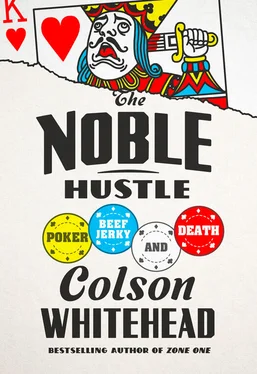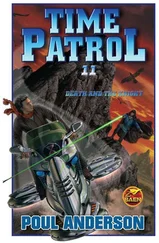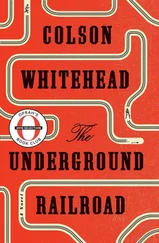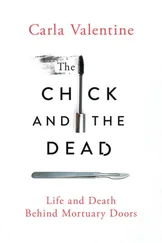Most poker books include glossaries of poker terms and a list of hand rankings, regardless of the ability level of their target audience. That cardplayer optimism about the Big Score, the one that will Change It All, channeled into crossover dreams, even though nobody knows what the hell they’re talking about. In this chapter I’ll stop to define some poker lingo here and there, and will now commence with the requisite breakdown of hand rankings, even though I have no idea what the hell I’m talking about.
For those who have never played, there are plenty of mnemonic devices for remembering the hand rankings, which is really a list of reverse frequency. Some of the tricks—“High pair in your holster, break out the prairie oysters!” and “Full House sends you All-In! Too bad we haven’t invented penicillin!”—date to the early frontier days of the game and haven’t aged well. It’s important to find the rhetorical system that works for you.
In explaining the game to a contemporary American audience, one should employ analogies appropriate to the culture. To start, when judging a five-card hand of random crap, the highest carddetermines its value. No trips, no straights, nothing but, say, a Jack or a King. You got zip. By an American standard of success you’ve totally botched it. Your worldly possessions — what you’ve been dealt — are nothing more than a cracked snow globe, a ball of twine, an unwrapped candy cane, the electronic keycard to a job you got fired from six years ago, and a thimble. In a showdown with the Lady with the Crimson Hair, she turns over the same first four items, but instead of a thimble, she has a signed head shot of Ben Vereen. You both have terrible hands, but in a war of who has the better crap, the Lady wins for possessing the highest value item: the Ben Vereen commemorative.
Whoever has the better stuff wins. Sound familiar, American lackeys of late-stage capitalism? After highest card comes one pair. You have one Queen, but your opponent has two Queens. Who wins? Imagine the Queens are gas-guzzling sport-utility vehicles. DVD players for the kids, butt warmers, GPS voiced by Helen Mirren. Your family has one SUV, but Big Mitch next door has two of them. Who wins? Exactly. That’s the virtue of culturally appropriate mnemonics.
Next comes two pair. You have one pair of thermal socks. Ready to throw down with Old Man Winter, “To Build a Fire”—style. Robotron over there has one pair of Miles Davis CDs and one pair of coupons for free Jazzercise lessons. He wins: two pair beats having one pair. Now let’s say you also have a pair of Golden Girls box sets, so that you both have two pair. The highest value pair determines who wins. In this case, Miles Davis takes it for Robotron. In a face-off between your possibly lifesaving footwear, plus the entire run of a series about the twilight years of four feisty gals, and your opponent’s late-period Miles and cardio-heavy Jazzercise, he has the nuts.
Three of a kind, or trips, is best illustrated by a quote from the inspiring story of a young immigrant’s pursuit of the American dream, Oliver Stone’s Scarface (1983): “In this country, you gotta make the money first. Then when you get the money, you get the power. Then when you get the power, you get the women.” I know it’s a universal quote, speaking to all walks of life, as I’ve heard suburban white guys cite it without irony. Money, power, women: That’s three Aces in your hand right there. Certainly beats what you’re usually holding in your hand, boys.
As an Anhedonian, those analogies don’t speak to me. What do I see when I’m dealt a straight—five cards in a series, like 5-6-7-8-9, not all of the same suit? To my tribe, that’s five misfortunes in a row, but not the same brand of misfortune. Let’s say one afternoon, one after the other in sequence, you: forget the name of someone you’ve met several times; e-mail an important document late; require an emergency root canal; overcook the risotto; and pick an argument with your partner because you blame them for everything that happened today. That’s five misfortunes, but a mix of social, professional, and health-related misfortunes. They are “differently suited.”
A flushwould be five misfortunes of the same kind, or suit. Social, for example. You forget the name of someone you’ve met several times, pick a fight with a loved one, disrespect a member of the service industry, accidentally cuss during the kid’s playdate, and fart loudly during the toast at your cousin’s wedding. Fan out these things before you, arrange them by type: They are all in the same family of social disaster, the same suit. Let’s say five spades, because you’re always digging yourself into a hole.
With a full house, we’re back to Western measures. A full house is empire-building, conspicuous consumption: a pair and three of a kind. And four of a kind, say four Aces? First you get the money, then you get the power, then you get the women, then you get a really great deal on a time-share.
The highest ranked hand in poker is the straight flush. It’s the least likely hand you’ll be dealt, rare as a true catastrophe. Like, five health-related disasters, one after the other. That’s being stabbed by a hobo with a penknife, an infected hangnail, ashy elbows, tummy trouble from “three-times washed” greens only washed twice, topped off by double stigmata. A real straight flush of bodily complaint. A sign from above.

HOLLYWOODING :Using all your years of deceiving others to put on a show at the table. Ever said, “Cute baby,” about some newborn who’d found a portal between their Hell Dimension and our world? You may have a career in poker.

Playing dummy hands on the living-room floor. But who among us has not played out demented scenes on a dirty carpet? That was basically my entire twenties in a nutshell. Sure, I lived one block up from crack houses, black plastic bags twisting on the bare branches outside, but my pastime acquainted me with some of the hidden physics of the game. I’d have to go beyond my mad-scientist experiments now that I was going to Vegas. I was soft.
I ordered books, the website’s previous customers serving up recs via algorithm. No Limit Hold ’em: Theory and Practice by David Sklansky and Ed Miller, and the morbidly titled Kill Phil: The Fast Track to Success in No-Limit Hold ’Em Poker Tournaments and Kill Everyone: Advanced Strategies for No-Limit Hold ’Em Poker Tournaments and Sit-n-Go’s . Didn’t get too far into the Kill books, but I admired the authors for their ambition, after they’d set their sights too low with the first volume.
I’d flipped through Sklansky’s famous The Theory of Poker some fifteen years earlier. Sklansky was one of poker’s philosopher-kings, and wrote the first book on Hold’em in 1976. Smiling in his author photo, with his receding hairline, trimmed beard, and oversize specs, here was the face of a player who knew the holy probabilities, the math teacher come at last to explain the numbers. Sklansky’s prose was cool, exact. I had no idea what the hell he was talking about.
Not that it would have helped in my ’90s home game that much — our trash, wild-card games spoiled any aspirations of rigor. Poring through this new, Big-Boy Sklansky years later, I felt invigorated underlining phrases such as “Winning the battle of mistakes means making sure that your opponents make frequent and more costly mistakes than you do.” The Battle of Mistakes. It sounded like commentary on life in the big city, where sometimes good fortune is just having fewer messed-up things happening to you.
Читать дальше













